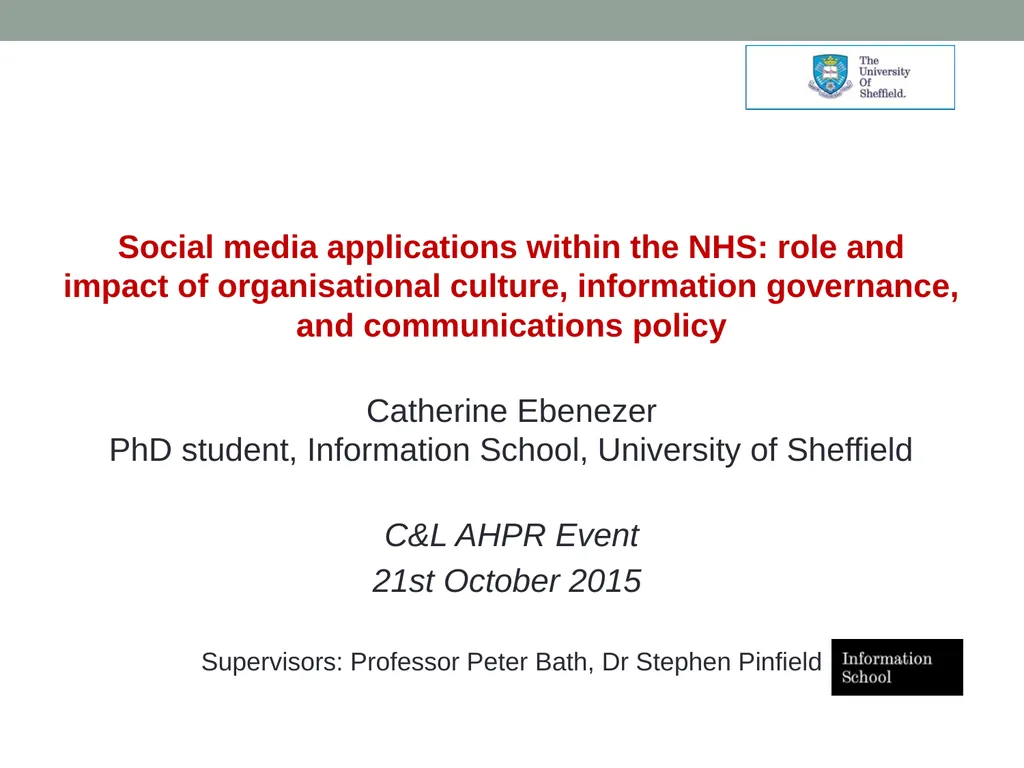
Social media applications within the NHS: role and
Author: jane-oiler | Published: 2025-05-29
Description: Social media applications within the NHS: role and impact of organisational culture, information governance, and communications policy Catherine Ebenezer PhD student, Information School, University of Sheffield CL AHPR Event 21st October
Download Presentation
Download the PPT/PDF: Download
Transcript:
Loading transcript…